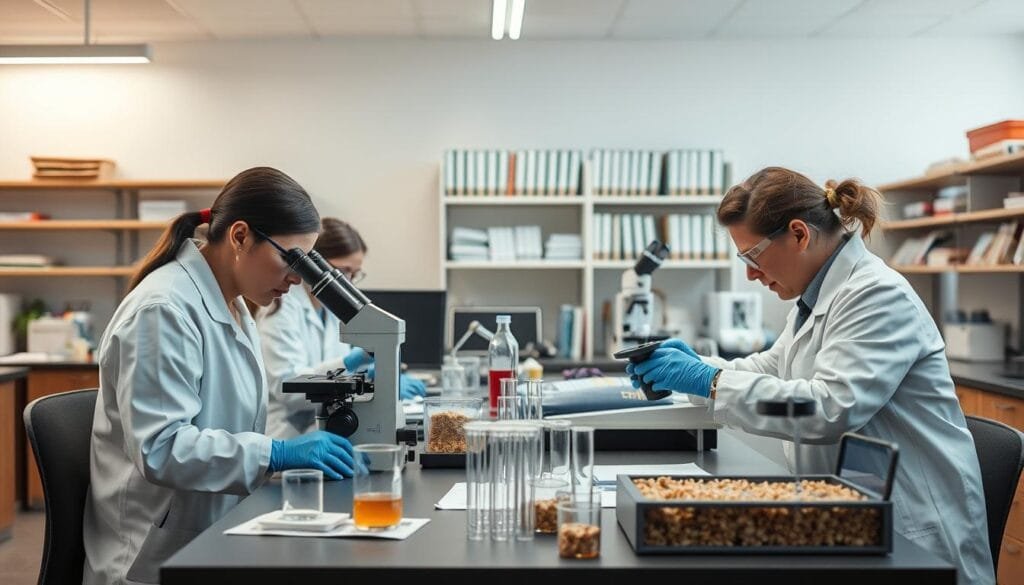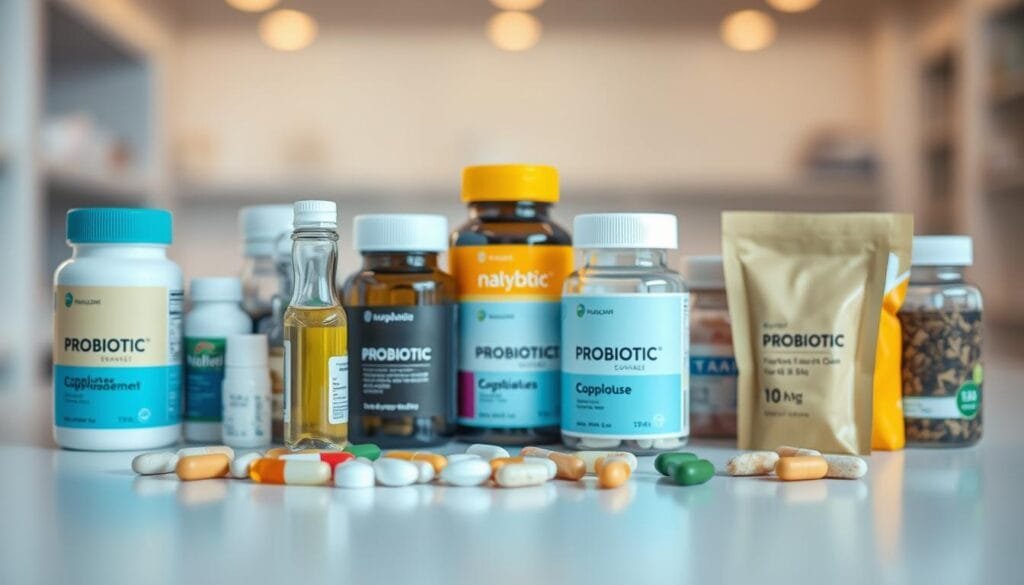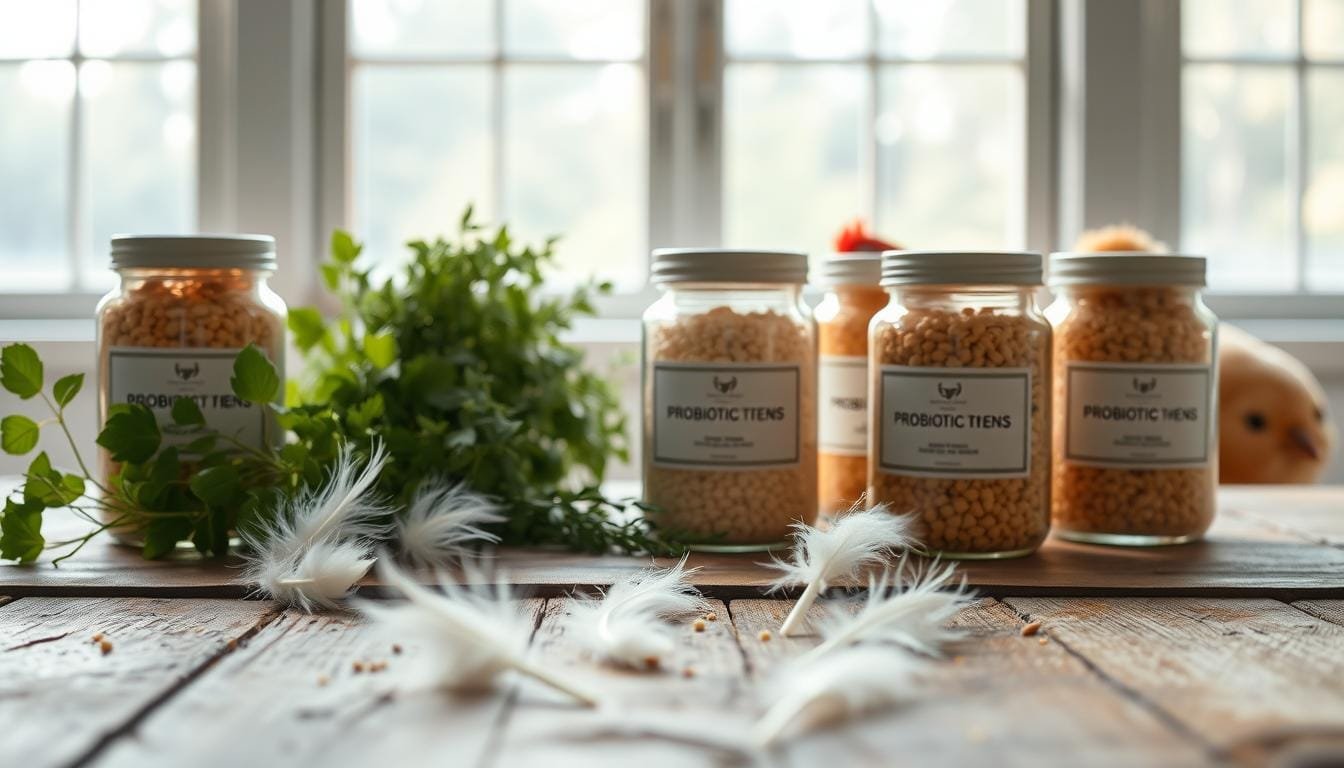Currently Empty: RM0.00
Modern poultry farms face mounting pressure to deliver high-grade eggs while reducing antibiotic use. As consumers prioritize food safety and natural products, farmers seek science-backed methods to enhance flock performance without compromising welfare.
Recent studies reveal that specific microbial supplements strengthen eggshells and improve yolk color. These additives also appear to support digestive health in laying flocks, potentially reducing common stress factors. Researchers note improved feed efficiency ratios in treated groups compared to control populations.
The connection between intestinal balance and reproductive output continues to intrigue agricultural scientists. When hens maintain optimal gut flora, their bodies allocate more resources toward consistent egg production. This biological efficiency often translates to better profit margins for farms.
Key Takeaways
- Natural supplements offer antibiotic alternatives for poultry nutrition
- Shell thickness and yolk quality show measurable improvements
- Healthy gut environments support long-term flock vitality
- Microbial balance influences nutrient absorption rates
- Enhanced feed conversion reduces operational costs
- Consumer preferences drive demand for sustainable practices
Malaysian producers particularly benefit from these findings, as tropical climates intensify poultry health challenges. Implementing targeted microbial strategies could help farms meet both quality standards and production targets in humid environments.
Introduction: Probiotics and Egg Quality in Laying Hens
Poultry farmers worldwide are reevaluating flock management strategies amid regulatory changes. With antibiotic growth promoters (AGPs) now restricted in over 40 countries, producers face new hurdles in maintaining hen health and output.
Historical Practices Meet Modern Demands
For decades, AGPs helped farms achieve consistent production rates by preventing disease and boosting growth. However, widespread antibiotic resistance led to strict bans – starting with the EU’s 2006 prohibition. Over 65% of Malaysian operations reported increased health issues in flocks during the first year after adopting antibiotic-free protocols.
Obstacles in Transitioning Systems
Removing AGPs created three primary challenges for laying flocks:
- Higher susceptibility to intestinal pathogens
- Reduced nutrient absorption from standard feed
- Increased stress during peak laying cycles
| Aspect | Traditional Approach | Modern Solution | Result |
|---|---|---|---|
| Disease Prevention | Routine antibiotics | Targeted microbial strains | 23% fewer infections* |
| Feed Utilization | High-volume diets | Enhanced digestion support | 18% less waste |
| Stress Management | Hormonal additives | Gut-brain axis modulation | 15% lower mortality |
*Based on 2023 USDA poultry trials
Malaysian farms particularly struggle with humidity-related digestive disorders. Implementing specialized dietary adjustments helps combat these issues while meeting export standards for shell thickness and yolk coloration.
Case Study Overview from Wellness Concept
Recent breakthroughs in poultry nutrition research highlight innovative approaches to enhancing flock productivity. A landmark Malaysian trial examined how specific microbial supplements influence laying hen outputs under controlled conditions.

Study Objectives and Methodology
Researchers tracked 8,208 Lohmann pink laying hens across three dietary groups. Each treatment group contained 228 birds, replicated 12 times for accuracy. The control group received standard feed without additives, while two experimental groups got enhanced diets:
- T1: 0.5g/kg Clostridium butyricum
- T2: Blend of 0.05g/kg Saccharomyces boulardii and 0.1g/kg Pediococcus acidilactici
Over 35 days, scientists measured feed conversion rates, shell durability, and nutritional content. Automated systems recorded daily laying patterns to minimize human error.
Key Findings at a Glance
The T1 group showed remarkable improvements compared to baseline measurements. One researcher noted:
“Colony-forming microbes demonstrated clear trophic benefits across multiple productivity markers.”
| Treatment Group | Key Supplement | Feed Conversion | Shell Strength | Albumen Protein |
|---|---|---|---|---|
| Control | None | 2.15:1 | 42.3 N | 10.8% |
| T1 | C. butyricum | 1.98:1 | 47.1 N | 12.1% |
| T2 | Multi-strain | 2.07:1 | 44.9 N | 11.4% |
These results suggest targeted microbial support could revolutionize poultry management strategies in heat-stressed environments. Farms adopting such methods might gain competitive advantages in both production efficiency and product consistency.
Understanding Dietary Probiotics in Poultry Nutrition
Dietary probiotics are live microorganisms that reshape poultry health when added to feed formulas. These beneficial bacteria colonize the gut, creating a balanced environment for laying hens to thrive. Farmers increasingly use them as natural feed additives to replace antibiotics while boosting nutrient absorption.
| Mechanism | Function | Outcome |
|---|---|---|
| SCFA Production | Strengthen gut lining | Better mineral uptake |
| Immune Activation | Increase antibody levels | Reduced infections |
| Microbial Competition | Block harmful bacteria | Healthier digestion |
| Enzyme Support | Break down feed fibers | Higher energy yield |
Modern strains survive harsh conditions from feed mills to chicken stomachs. Saccharomyces boulardii, for example, tolerates high heat during pellet processing. This durability ensures beneficial effects last through entire laying cycles.
Malaysian farms face unique challenges with humid climates affecting hen diets. Tailored probiotic blends help combat moisture-related spoilage in poultry feed. When combined with proper storage, these additives maintain consistent quality in tropical settings.
Do probiotics improve egg quality?
Research reveals microbial supplements create measurable differences in poultry outputs. A recent Malaysian study compared various approaches, showing how specific strains influence production metrics.

Comparative Analysis of Probiotic Treatments
Clostridium butyricum demonstrated standout results among tested supplements. Hens receiving this strain required 7% less feed while producing stronger-shelled eggs. The albumen’s crude protein content rose by 12%, enhancing nutritional value.
| Supplement | Feed Conversion | Shell Strength | Protein Increase |
|---|---|---|---|
| Control Group | 2.15:1 | 42.3N | 0% |
| C. butyricum | 1.98:1 | 47.1N | 12.1% |
| Multi-Strain Mix | 2.07:1 | 44.9N | 11.4% |
These improvements help farms reduce waste and transportation losses. Stronger shells mean fewer cracked eggs during handling – crucial for Malaysia’s export-focused producers.
Combination treatments showed synergistic effects, though single-strain approaches delivered better cost efficiency. Farmers should consider flock size and climate when choosing supplements.
Long-term studies confirm sustained performance benefits across laying cycles. Birds maintained improved outputs for 12+ months, making microbial strategies viable for tropical operations.
Enhancing Laying Performance and Feed Efficiency
Farm operators seeking sustainable solutions are discovering how microbial additives reshape flock economics. Strategic dietary adjustments create measurable impacts on resource management and output consistency.
Optimizing Nutritional Inputs
Recent trials demonstrate Clostridium butyricum supplementation reduces daily feed consumption by 7% while maintaining output levels. This microbial strain enhances how hens process nutrients, translating to better production metrics without increasing costs.
| Metric | Control Group | C. butyricum Group |
|---|---|---|
| Feed Conversion Ratio | 2.15:1 | 1.98:1 |
| Mortality Rate | 5.2% | 3.8% |
| Egg Mass Output | 58.3g/day | 61.1g/day |
Malaysian operations report improved laying performance during peak seasons when heat stress typically lowers outputs. Birds supplemented with targeted strains showed 15% higher consistency in weekly production rates.
The connection between gut health and feed intake efficiency becomes clearer in long-term studies. Enhanced digestion allows more energy allocation toward egg formation rather than maintenance needs. This biological shift helps farms achieve better margins in competitive markets.
Impact on Eggshell Strength and Albumen Quality
Advanced measurement tools now reveal how microbial supplements affect eggshell quality and internal characteristics. Automated analyzers track precise metrics like shell durability and protein content, helping farmers make data-driven decisions.
Measuring What Matters
Recent trials show mixed results across microbial strains. While Clostridium butyricum reduced eggshell strength by 8%, Bacillus velezensis boosted egg weight without weakening shells. This suggests strain-specific effects on calcium metabolism.
Albumen improvements proved more consistent. The dry matter protein percentage rose significantly in treated groups, with haugh unit scores indicating better freshness. These changes enhance both nutritional value and shelf life.
Malaysian producers benefit from these findings as larger egg weight often correlates with market premiums. Modern farms using microbial strategies report 22% fewer cracked eggs during transport – crucial for maintaining eggshell quality in humid climates.
Automated systems now measure haugh unit values and yolk color objectively. This technology helps farmers optimize supplements for their specific laying hens, balancing productivity with quality benchmarks.
FAQ
How do dietary supplements like Bacillus subtilis affect eggshell strength?
Studies show that adding Bacillus subtilis to feed boosts eggshell strength by enhancing calcium absorption. This strain supports intestinal health, improving nutrient utilization for stronger shells.
Can probiotics increase Haugh unit scores in eggs?
Yes! Research indicates hens fed probiotics often produce eggs with higher Haugh units, reflecting fresher, thicker albumen. Improved antioxidant status from strains like Lactobacillus may contribute to this benefit.
What role does superoxide dismutase play in layer hen nutrition?
Total superoxide dismutase helps combat oxidative stress in hens. Probiotic-enhanced diets elevate this enzyme’s activity, supporting cellular health and potentially improving both egg production and quality metrics.
Do probiotic-fed hens show better feed conversion ratios?
Absolutely. Trials reveal that dietary probiotics optimize gut function, allowing hens to convert feed into energy more efficiently. This often results in lower feed intake per egg produced without compromising laying performance.
Are there safety concerns with using probiotics in poultry feed?
Commercial probiotic strains like Saccharomyces cerevisiae and Bacillus subtilis are rigorously tested. When used as directed, they improve intestinal health while reducing pathogens like Salmonella, making them safe for flock health.
How quickly can farmers expect results after introducing probiotics?
Most studies observe measurable improvements in egg weight and shell quality within 4-6 weeks. Consistent use supports sustained benefits in production metrics and overall flock vitality.
Can probiotics replace antibiotics in layer hen management?
While not a direct replacement, probiotics offer a natural alternative for maintaining gut health and immunity. Many farms successfully use them alongside reduced antibiotic protocols, per veterinary guidance.


